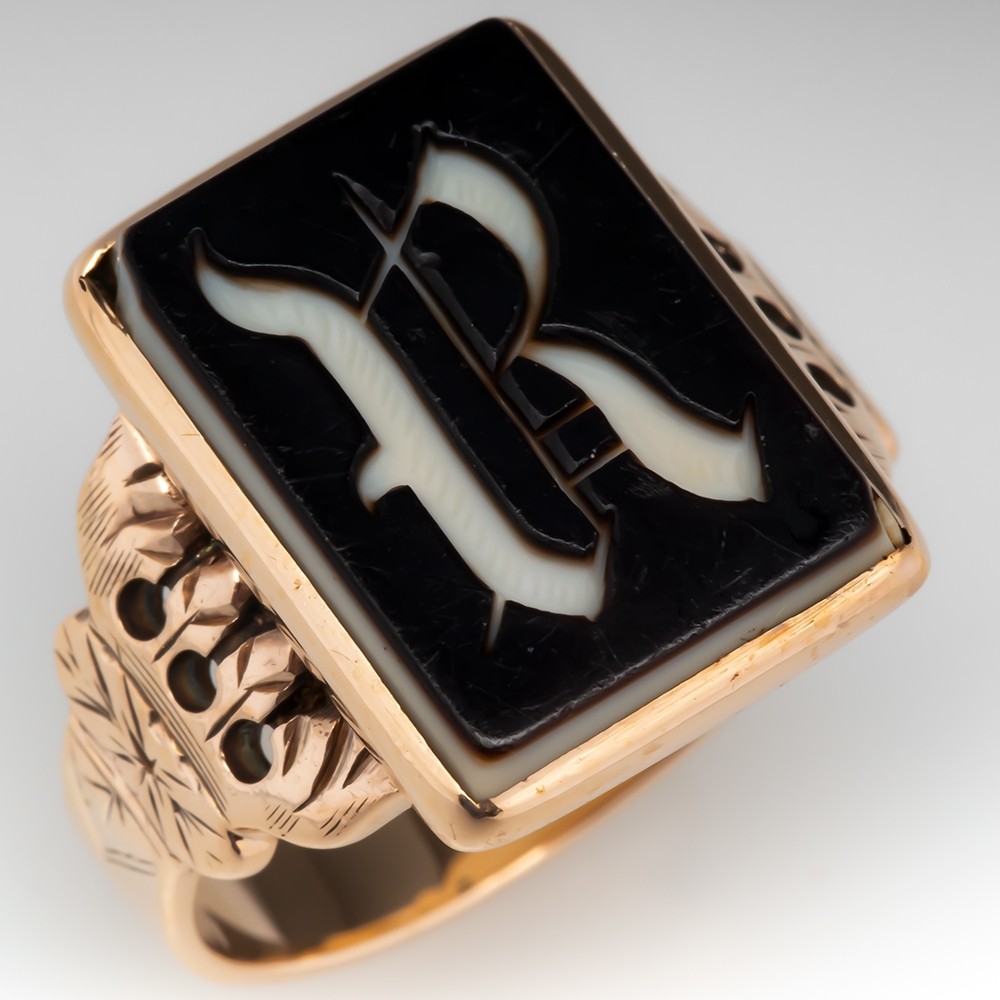Posted in: Jewelry History
 Victorian Cameo Pendant. Photo copyright EraGem.
I love statues, carvings, and all things beautiful and tiny. This makes cameos some of my favorite forms of jewelry. Though I am most familiar with what Anna Miller calls the "vapid females,” I have learned that cameo carving is an intricate and ancient tradition (Miller, Cameos, 1).
Believed to be culture-in-art at its finest, the first cameos were used as tokens of historical events, teaching tools for ethics and morals, talismans to ward off evil spirits, and amulets to enhance health (Miller, Cameos, 1). Throughout the Victorian Era, the memorial and historical nature of cameos fit nicely within the romantic idealism of that time.
The use of cameos in necklaces, earrings, bracelets, brooches, and rings is one of the most prolific jewelry motifs used throughout the Victorian Era. The first cameos were carved into precious stones; however, around 1810, artisans began to carve cameos out of seashells. Not only was shell easier to sculpt, but designers also began to layer gemstones beneath or on top of the shell to create a new layering effect.
Victorian Cameo Pendant. Photo copyright EraGem.
I love statues, carvings, and all things beautiful and tiny. This makes cameos some of my favorite forms of jewelry. Though I am most familiar with what Anna Miller calls the "vapid females,” I have learned that cameo carving is an intricate and ancient tradition (Miller, Cameos, 1).
Believed to be culture-in-art at its finest, the first cameos were used as tokens of historical events, teaching tools for ethics and morals, talismans to ward off evil spirits, and amulets to enhance health (Miller, Cameos, 1). Throughout the Victorian Era, the memorial and historical nature of cameos fit nicely within the romantic idealism of that time.
The use of cameos in necklaces, earrings, bracelets, brooches, and rings is one of the most prolific jewelry motifs used throughout the Victorian Era. The first cameos were carved into precious stones; however, around 1810, artisans began to carve cameos out of seashells. Not only was shell easier to sculpt, but designers also began to layer gemstones beneath or on top of the shell to create a new layering effect.
 Victorian Signet Ring. A fine example of intaglio. Photo copyright EraGem.
Cameo carving has a twin technique, intaglio (in-tal-y-o), in which the design is etched into the stone. Both styles date as far back as ancient Roman civilization, though the intaglio design was used more prominently in ancient civilizations as official seals. When designed as rings, these intaglio rings could be worn by merchants, kings, and other authorities. Wearing the seals offered further protection from theft.
With the signet ring of a merchant, you could buy or sell wares. With the signet ring of a landowner, you could collect rent or assign property rights. And with the signet ring of a king, you could dispatch an army or call for a sumptuous feast.
Though the advent of the personal signature and modern-day stamps have eliminated the requirement for signet rings, many monarchs and prestigious families still have personal signet rings with family crests or their initials engraved in them. I have yet to find out if they actually use them to seal important documents. If you find a link with this information, please leave me a comment so I can check it out and update this post.
by Angela Magnotti Andrews
BIBLIOGRAPHY
1. Anna M. Miller. Cameos: Old & New, 3rd Edition. Woodstock: Gemstone Press, 2002.
2. Monica Lynn Clements. "Victorian Cameos." New England Antiques Journal, accessed May 8, 2012. http://www.antiquesjournal.com/pages04/archives/cameos.html.
3. J. E. Cornett. "What is Intaglio Jewelry." eHow, last modified February 3, 2012. http://www.ehow.com/about_6217549_intaglio-jewelry_.html.
4. Fredrik Brodin. "Seals and the signet ring." The Armorial Blog, December 15, 2011. Accessed May 8, 2012. http://armorialblog.wordpress.com/2011/12/15/seals-and-the-signet-ring.
5. Duff. "Victorians Just Wanna Have Fun." Jean Jean Vintage, January 31, 2011. http://jeanjeanvintage.blogspot.com/2011/01/victorians-just-wanna-have-fun.html.
Victorian Signet Ring. A fine example of intaglio. Photo copyright EraGem.
Cameo carving has a twin technique, intaglio (in-tal-y-o), in which the design is etched into the stone. Both styles date as far back as ancient Roman civilization, though the intaglio design was used more prominently in ancient civilizations as official seals. When designed as rings, these intaglio rings could be worn by merchants, kings, and other authorities. Wearing the seals offered further protection from theft.
With the signet ring of a merchant, you could buy or sell wares. With the signet ring of a landowner, you could collect rent or assign property rights. And with the signet ring of a king, you could dispatch an army or call for a sumptuous feast.
Though the advent of the personal signature and modern-day stamps have eliminated the requirement for signet rings, many monarchs and prestigious families still have personal signet rings with family crests or their initials engraved in them. I have yet to find out if they actually use them to seal important documents. If you find a link with this information, please leave me a comment so I can check it out and update this post.
by Angela Magnotti Andrews
BIBLIOGRAPHY
1. Anna M. Miller. Cameos: Old & New, 3rd Edition. Woodstock: Gemstone Press, 2002.
2. Monica Lynn Clements. "Victorian Cameos." New England Antiques Journal, accessed May 8, 2012. http://www.antiquesjournal.com/pages04/archives/cameos.html.
3. J. E. Cornett. "What is Intaglio Jewelry." eHow, last modified February 3, 2012. http://www.ehow.com/about_6217549_intaglio-jewelry_.html.
4. Fredrik Brodin. "Seals and the signet ring." The Armorial Blog, December 15, 2011. Accessed May 8, 2012. http://armorialblog.wordpress.com/2011/12/15/seals-and-the-signet-ring.
5. Duff. "Victorians Just Wanna Have Fun." Jean Jean Vintage, January 31, 2011. http://jeanjeanvintage.blogspot.com/2011/01/victorians-just-wanna-have-fun.html. 11 years ago
12 view(s) 